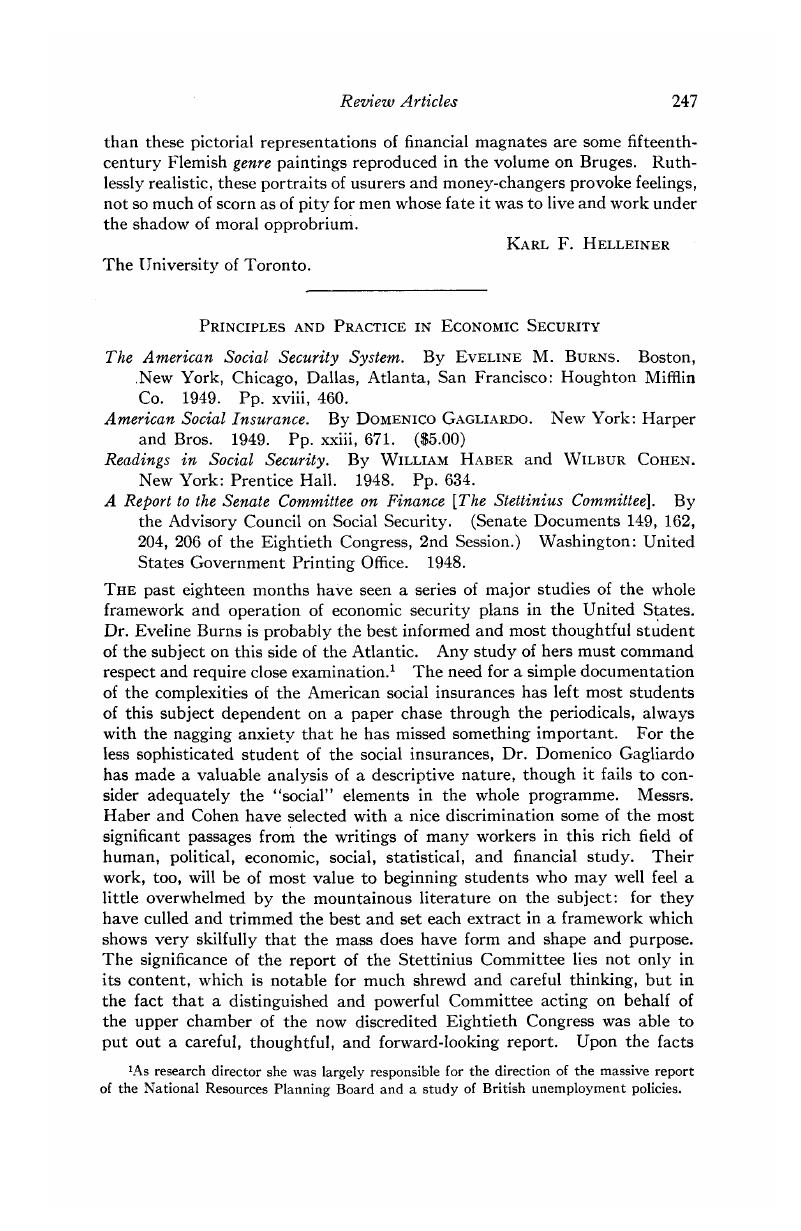No CrossRef data available.
Article contents
Principles and Practice in Economic Security
Published online by Cambridge University Press: 07 November 2014
Abstract

- Type
- Review Articles
- Information
- Canadian Journal of Economics and Political Science/Revue canadienne de economiques et science politique , Volume 16 , Issue 2 , May 1950 , pp. 247 - 255
- Copyright
- Copyright © Canadian Political Science Association 1950
References
1 As research director she was largely responsible for the direction of the massive report of the National Resources Planning Board and a study of British unemployment policies.
2 ”Since the time of the passage of the original (Social Security) Act, the number of persons aged 65 and over has risen from somewhat more than 7–8 millions to nearly 11 million. In another 25 years there may be nearly 20 million aged persons in the United States. In these circumstances it is particularly important that the aged make the contribution to production of which they are capable.” A Report to the Senate Committee on Finance, Senate Document 149, p. 10.
3 Washington: Brookings Institute, 1946.
4 The author has a vivid and painful memory of his youth in the town of Jarrow, England, of which in 1931 a leader writer of the London Times wrote “The aristocracy of the town are those who are still on insurance benefit,” the larger part of the population having slipped from that estimable status on to the lesser status of “being on the dole.”
5 Temple, William, Christianity and the Social Order (London, Penguin Books, 1942), pp. 10–16.Google Scholar
6 Wunderlich, Freda, “Social Insurance versus Poor Relief” (Social Research, 03, 1947, pp. 80–4).Google Scholar
7 The Canadian Welfare Council, Dominion-Provincial Relations and Social Security (Ottawa, 1946), p. 6.Google Scholar The Minister of Health and Welfare stated in the House of Commons on December 19th, 1949, that to give a flat rate pension of 140 a month to all Canadians over 65 would cost $491 millions, and to do the same with the rate at $50 a month would cost $614 millions.
8 New York Times, Financial Section, Oct. 9, 1949.
9 It is, however, probably anti-social and bad economics to think of age as something to be consoled by cash payments; but that is another matter altogether.




